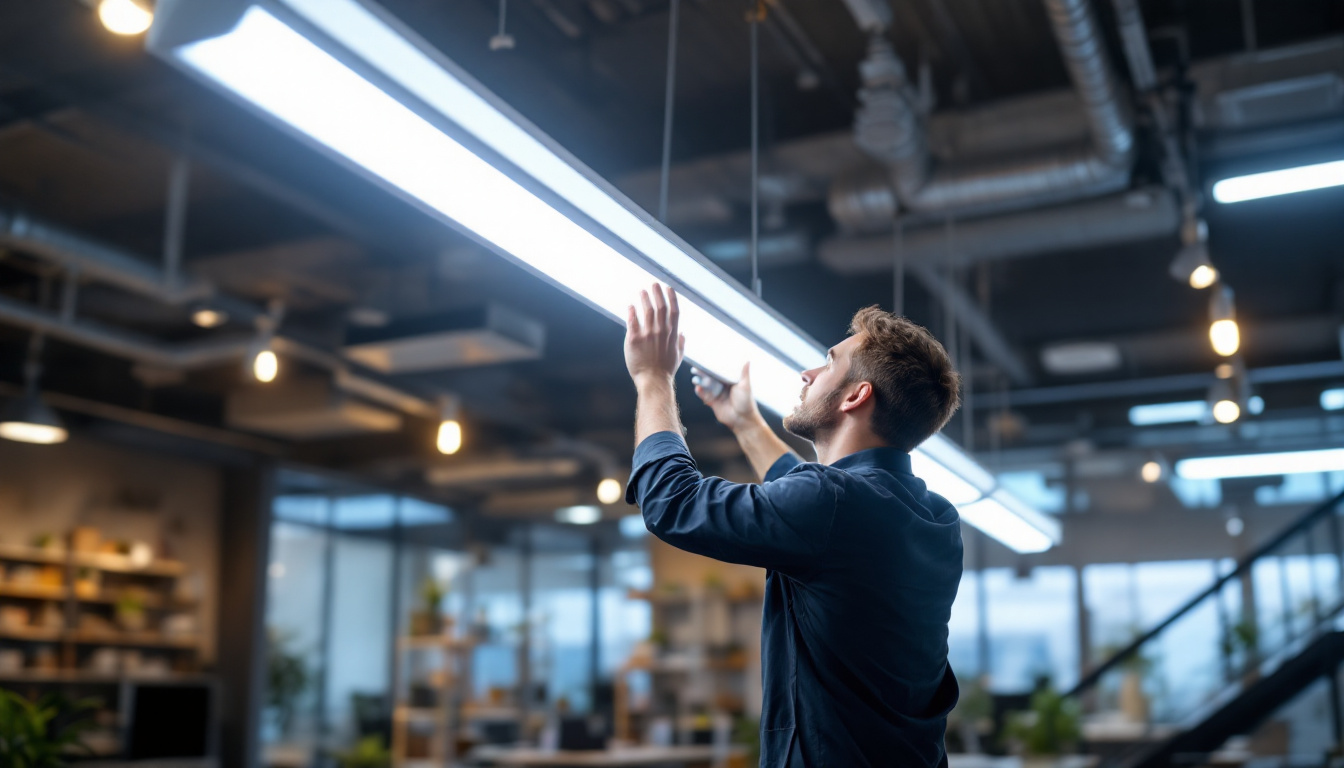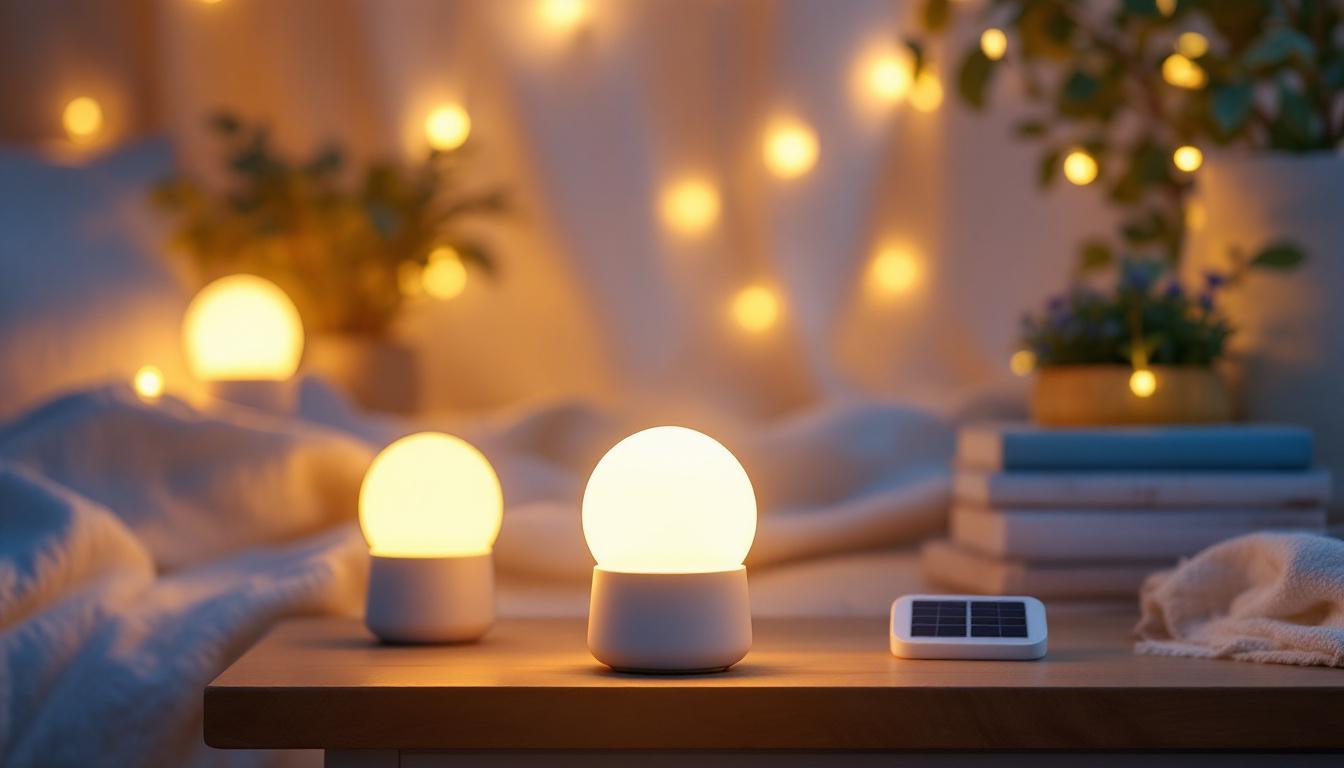
fluorescent shop lights are a popular choice for commercial and industrial settings due to their energy efficiency and versatility. As a lighting contractor, understanding the best practices for installing and maintaining these lights can significantly impact the quality of your work and the satisfaction of your clients. This article explores the essential aspects of fluorescent shop lights, from selection criteria to installation techniques and maintenance tips.
Fluorescent lights operate by passing an electric current through a gas, which produces ultraviolet light. This light then excites a phosphor coating inside the bulb, generating visible light. This technology is not only efficient but also offers a range of color temperatures, making it suitable for various applications. The energy efficiency of fluorescent lighting is a significant advantage, as it can consume up to 75% less energy than traditional incandescent bulbs, leading to reduced electricity bills and a smaller carbon footprint. Additionally, fluorescent lights have a longer lifespan, often lasting up to 10,000 hours or more, which means less frequent replacements and lower maintenance costs.
There are several types of fluorescent lights available, each designed for specific applications. The most common types include T8, T5, and T12 bulbs. T8 bulbs are the most widely used due to their balance of efficiency and light output. T5 bulbs, while more compact, offer higher efficiency and are ideal for applications with limited space. T12 bulbs, although less efficient, are still found in older installations. Moreover, there are specialized fluorescent bulbs like high-output (HO) and very high-output (VHO) types, which are designed for environments requiring intense illumination, such as in industrial settings or large retail spaces. These bulbs can provide significantly higher lumen output, making them suitable for areas where bright lighting is essential for safety and productivity.
Color temperature, measured in Kelvin (K), plays a crucial role in the effectiveness of fluorescent lighting. For shop environments, a color temperature between 3500K and 5000K is often recommended. This range provides a bright, neutral light that enhances visibility without causing glare. Additionally, the Color Rendering Index (CRI) is essential for assessing how accurately colors appear under artificial light. A CRI of 80 or above is generally acceptable for most shop applications, ensuring that colors are perceived accurately. It’s also worth noting that different industries may prefer specific color temperatures and CRI values to optimize their work environments; for instance, a higher CRI is particularly beneficial in art studios or design spaces where color accuracy is paramount. Furthermore, advancements in fluorescent technology have led to the development of bulbs with improved CRI ratings, allowing for even better color representation and enhancing the overall ambiance of the space.
Proper installation of fluorescent shop lights is critical for maximizing their performance and lifespan. Adhering to best practices not only ensures compliance with safety standards but also enhances the overall efficiency of the lighting system.
Before installation, careful planning of the lighting layout is essential. Consider factors such as the size of the shop, the height of the ceiling, and the activities performed in the space. A well-thought-out layout will ensure even light distribution and minimize shadows, which can hinder visibility and safety.
Utilizing software tools for lighting design can help visualize the layout and make adjustments before installation. This approach allows for a more efficient use of fixtures and can lead to significant energy savings. Additionally, it’s beneficial to take into account the color temperature of the bulbs, as different temperatures can affect the ambiance and functionality of the workspace. For example, cooler temperatures (above 4000K) are often preferred in workspaces that require high attention to detail, while warmer temperatures (below 3000K) can create a more relaxed atmosphere suitable for areas like break rooms.
When installing fluorescent shop lights, electrical considerations are paramount. Ensure that the electrical system can handle the load of the new fixtures. This may involve upgrading circuits or ensuring that existing wiring is in good condition. Additionally, using high-quality ballast is crucial for the longevity of the bulbs. Electronic ballasts are recommended over magnetic ones due to their efficiency and reduced flicker.
It is also advisable to consult with a licensed electrician to ensure that all electrical work complies with local codes and regulations. They can provide insights into the best practices for wiring and circuit design, which can prevent potential hazards such as overloading circuits or creating fire risks. Furthermore, consider implementing a lighting control system, such as dimmers or motion sensors, which can enhance energy efficiency by adjusting the lighting based on occupancy and natural light availability.
The method of mounting fluorescent lights can vary based on the specific application and environment. For instance, surface-mounted fixtures are common in retail settings, while suspended fixtures may be more appropriate for industrial applications. Regardless of the method, ensure that all fixtures are securely installed and that any necessary safety measures, such as safety chains or brackets, are utilized.
Additionally, it’s important to consider the maintenance aspects of the mounting technique chosen. Fixtures that are easier to access will facilitate regular cleaning and bulb replacement, which are essential for maintaining optimal light output and extending the lifespan of the fixtures. In environments where dust and debris are prevalent, such as workshops or garages, selecting fixtures with sealed enclosures can protect the bulbs and ballasts from contaminants, thereby enhancing durability and performance over time.
Regular maintenance is vital to ensure that fluorescent shop lights perform optimally throughout their lifespan. A proactive maintenance strategy can prevent unexpected failures and extend the life of the lighting system.
Fluorescent lights can accumulate dust and grime over time, which can significantly reduce their light output. Regular cleaning of the fixtures and bulbs is essential. Use a damp cloth to wipe down the surfaces, taking care to avoid any electrical components. In environments with high dust levels, more frequent cleaning may be necessary to maintain optimal performance.
Fluorescent bulbs have a finite lifespan, typically ranging from 7,000 to 15,000 hours, depending on the type and usage conditions. Monitoring the performance of the bulbs is crucial; flickering or dimming lights are indicators that replacement is needed. Additionally, ballasts may also need replacement over time, especially if they are magnetic. Keeping a stock of replacement bulbs and ballasts can minimize downtime and enhance customer satisfaction.
Conducting regular energy audits can help identify opportunities for improving the efficiency of fluorescent lighting systems. These audits can reveal areas where energy is being wasted, such as outdated fixtures or improper usage patterns. By addressing these issues, contractors can recommend upgrades or modifications that not only improve lighting quality but also reduce energy costs for clients.
Selecting the appropriate fixtures for fluorescent shop lights is essential for achieving the desired lighting effect. The right choice can enhance productivity, safety, and aesthetics in the workspace.
Fluorescent fixtures come in various styles, including troffers, strip lights, and high-bay fixtures. Troffers are commonly used in drop ceilings and provide a clean, finished look. Strip lights are versatile and can be used in various applications, from workbenches to storage areas. High-bay fixtures are ideal for warehouses and industrial settings with high ceilings, providing powerful illumination over large areas.
When selecting fixtures, consider their energy efficiency ratings. Look for products that are ENERGY STAR certified, as these fixtures meet strict efficiency guidelines set by the Environmental Protection Agency. Choosing energy-efficient fixtures not only benefits the environment but can also lead to significant cost savings for clients over time.
Lighting contractors often face challenges when working with fluorescent shop lights. Understanding these challenges and knowing how to address them can enhance the quality of service provided to clients.
Flickering or dimming lights can be a common issue with fluorescent fixtures. This can be caused by several factors, including faulty ballasts, aging bulbs, or poor electrical connections. Troubleshooting these issues involves checking the ballast and connections first, as these are often the culprits. If the problem persists, replacing the bulbs may be necessary.
Over time, fluorescent bulbs can experience color shift, where the light output changes in hue. This can lead to an inconsistent appearance in the lighting, which can be particularly problematic in retail environments. To combat this, it is advisable to replace bulbs in pairs or sets to ensure consistent color temperature across the fixtures.
The lighting industry is continually evolving, and staying informed about future trends can help contractors remain competitive. While LED technology is gaining popularity, fluorescent lights still have a significant role in specific applications.
One emerging trend is the integration of fluorescent lighting with smart technology. This allows for enhanced control over lighting systems, including dimming capabilities and scheduling. Contractors should familiarize themselves with smart lighting controls, as they can offer clients greater flexibility and energy savings.
As sustainability becomes increasingly important, contractors should be aware of the environmental impact of fluorescent lighting. Proper disposal of fluorescent bulbs is essential due to the presence of mercury. Encouraging clients to participate in recycling programs can contribute to a more sustainable approach to lighting.
Fluorescent shop lights remain a valuable option for many commercial and industrial applications. By adhering to best practices in selection, installation, and maintenance, lighting contractors can ensure that their clients receive optimal performance and satisfaction from their lighting systems. As the industry evolves, staying informed about new technologies and trends will be crucial for continued success in the field.
Ready to elevate your lighting solutions with the best in the business? Look no further than LumenWholesale for all your fluorescent shop light needs. Our commitment to quality and affordability ensures that you get the most out of your investment. With our extensive selection of spec-grade lighting products, you can confidently tackle any project, knowing you’re backed by superior performance and unbeatable wholesale prices. Say goodbye to middleman markups and hello to hassle-free bulk buying with free shipping. Don’t compromise on quality or cost. Wholesale Lighting at the Best Value is just a click away. Make the smart choice for your business and your clients with LumenWholesale.

Discover the ultimate guide for lighting contractors on industrial LED light bulbs.

Discover why electrical exterior boxes are crucial for lighting contractors in ensuring safe, efficient, and durable outdoor lighting installations.

Discover the essential guide to LED fluorescent light fixtures tailored for lighting contractors.

Discover the benefits and considerations of using solar-powered night lights indoors, tailored specifically for lighting contractors.